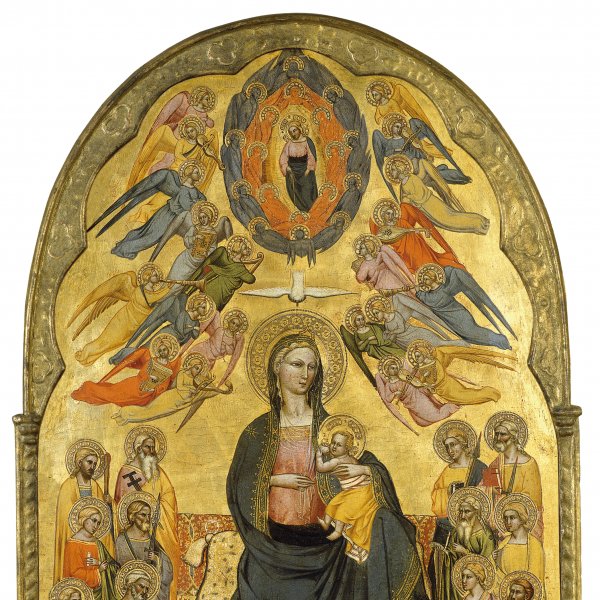Cenni di Francesco di Ser Cenni
Active in Florence 1369-ca. 1415
There is little surviving information or documentation regarding this Florentine painter. In one document the artist is registered in the Arte dei Medici e Speziali in Florence in March 1369. Stylistically, Cenni di Francesco is considered an eclectic painter. His first works, such as the San Cristofano Polyptych in Perticaia, Rignano sull’Arno, of 1370, are indebted to Orcagna and in general make use of gold backgrounds. According to Boskovits, the artist must have collaborated with Giovanni del Biondo at a time when he was most interested in issues of perspective. Also evident is the influence of Agnolo Gaddi. Cenni di Francesco’s figures have delicate, elegant features and elongated proportions, as evident in The Adoration of the Magi in San Donato in Polverosa, Florence. His work as an illuminator had a profound influence on his style, particularly in his marked sense of narrative, interest in detail and bright colouring. Cenni di Francesco’s late works combine Gothic elements with other, more traditional ones, as can be seen in The Virgin and Child with Saints (ca. 1400) in the Museo d’Arte Sacra di Montespertoli, and in his only signed work, namely the frescoes in the oratory of the church of San Francesco in Volterra of 1410, depicting The Legend of the True Cross. Other late works include the frescoes in San Lorenzo in Ponte, San Gemignano.
Cenni di Francesco was not part of the new, innovating movement in art that arose in Florence during his lifetime. He was registered in the Compagnia di San Luca in that city in 1415, which is generally considered the year of his death.
Cenni di Francesco was not part of the new, innovating movement in art that arose in Florence during his lifetime. He was registered in the Compagnia di San Luca in that city in 1415, which is generally considered the year of his death.





